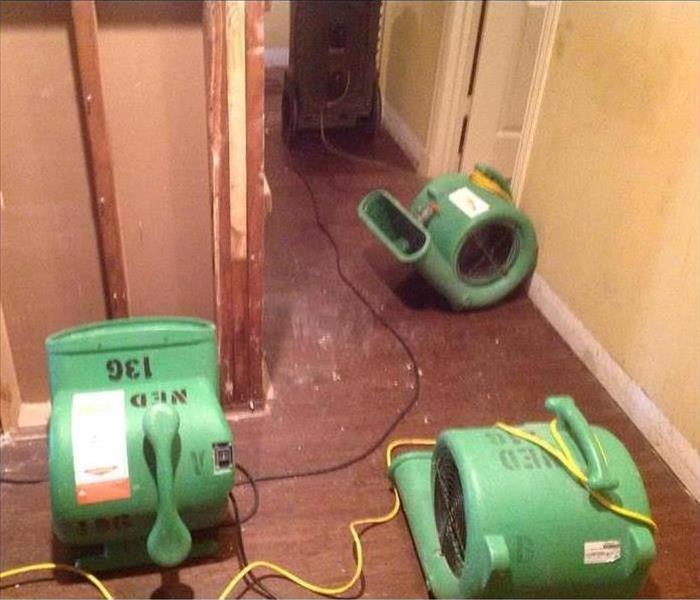How To Clean Up a Broken Water Heater
2/10/2022 (Permalink)
How To Deal With Water Heater Overflow
Having a broken water heater in Wilshire Heights, TX can be dangerous on many levels. While the most obvious threat from a leaking water heater is water damage, the liquid could come into contact with power outlets if not detected quickly, adding fire and electrical hazards to the list of possible dangers. Because they are typically hidden in low-traffic areas of the home, a failed water heater may not be detected for several days, which causes problems to multiply. When dealing with water heater overflow, follow these clean-up procedures to make the process go smoothly.
1. Shut off the water source. If you do not turn off your water while you clean up, not only will it be useless trying to mop up the liquid, it also increases the risk that the water comes in contact with an electrical source. For safety reasons, this should always be the first step.
2. Clean up the water. For small areas, you can probably mop up water with old towels. If your leaking water heater went undetected for a while, you may have a more substantial mess that may require a sump pump or a trash pump.
3. Assess secondary damage. Because mold and bacteria grow best in warm, damp places, a broken water heater can lead to more secondary damage than many other reasons for flooding. The warm water creates an environment that favors mold growth, so it is important to carefully expect any flooring or sheetrock the water came in contact with.
4. Treat mold and disinfect the area. Use an antifungal treatment to remove any existing mold, and then use a disinfectant to thoroughly cleanse the area. Scrubbing the affected spot with bleach and clean water may discourage mold to grow.
Cleaning up from a leaking water heater in your Wilshire Heights, TX home goes beyond simply mopping up the water. Remember to thoroughly clean and disinfect any area affected by your broken water heater.



 24/7 Emergency Service
24/7 Emergency Service
